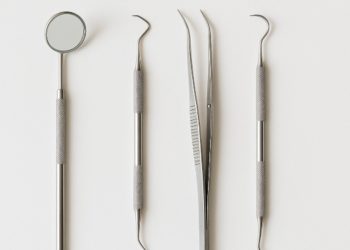A thorn for healthcare systems long, hospital readmissions have sapped resources, sent costs soaring, and indicated weakness in care to the patient. And despite more sophisticated discharge planning and transitional care programs, many patients (and particularly those with chronic conditions) find themselves right back to the hospital within 30 days. Step in Remote Patient Monitoring (RPM), a technology-driven approach that has played a game-changing role in cutting down on avoidable readmissions.
Telecare is one of many companies that is helping healthcare providers take a proactive stance. RPM differs from ‘big RT calls’ and checkups in that it provides real-time visibility of a patient’s health status after discharge. So if a small issue is caught early, this means healthcare teams can intervene early, oftentimes before this itself turns into a crisis.
The Readmission Problem
Close to one in five Medicare patients in the U.S. are readmitted to the hospital within 30 days of discharge. Readmissions cost the healthcare system over $26 billion per year and a total of $17 billion is estimated to be preventable. The top culprits are chronic conditions — especially congestive heart failure, COPD, and diabetes — because they can result in complications that don’t get noticed until their suppression results in a subsequent hospital stay.
For hospitals, the stakes are even higher. Institutions with higher readmission rates are financially penalized under CMS’s Hospital Readmissions Reduction Program (HRRP). That’s driven many to figure out better post-acute care strategies—and RPM is now in focus.
How RPM Closes the Post-Discharge Gap
Then a patient leaves the hospital, and their recovery journey starts. Unfortunately, this is where most health systems lose visibility. The patient forgets to take the medication, neglects to go to a follow-up appointment, or, simply ignores early warning signs that something is wrong.
RPM bridges this gap. When connected devices—think blood pressure cuffs, pulse oximeters, and glucose monitors—are sent home with patients, the healthcare provider can track vitals every day. A patient with congestive heart failure who suddenly gains unexpected weight may be indicating fluid retention. If you have RPM, that spike is instantly seen and someone contacts a nurse to adjust medication, make a home visit, or head back to the ER.
Providers of RPM such as Telecare provide all of the above in the form of comprehensive RPM kits that include cellular-enabled devices, patient onboarding, and ongoing support. It takes away the usual friction points for patients after discharge and raises compliance rates. However, more importantly, it is the actionable data on which for example providers can rely to avoid tripping into a crisis.
Aligning Care and Costs
Not only is avoiding readmission penalties driving reducing the readmissions anymore from a financial perspective it’s about capturing new revenue as well. RPM services include device setup, patient education, and ongoing monitoring and providers can be reimbursed for them by Medicare. That’s good for the providers because they avoid the costs of another admission and also make money keeping patients healthier at home.
This is a win for everybody: patients get better care; providers get reimbursed; and we deflect some of the burden from inpatient capacity. Today, many systems are employing RPM as a strategic tool to manage bed availability even in high-demand seasons such as the flu outbreak or COVID surges.
RPM and the Human Side of Healthcare
But RPM is about much more than numbers, it offers continuity and connection, something that’s often missing when you step into post-acute care. Patients feel seen. They don’t get abandoned to their own devices after discharge, they’re still in a care relationship. That makes all the psychological difference in the world to many—elderly patients, for instance, or those with myriad chronic illnesses.
It shows when they call you, your oxygen level drops, and someone’s paying attention. It just builds trust when your care team adjusts your meds before you even notice symptoms. This type of engagement has knock-on on effects readmissions, medication adherence, follow-up attendance, and overall satisfaction with care.
Telecare’s approach emphasizes this relational aspect of RPM. They don’t just want to capture health data, they want to close a feedback loop between patients and clinicians that enables better care across the board.
Final Thoughts
A hospital is no longer responsible for their patients at discharge. In the era where care doesn’t end once the patient leaves, care of your patients can happen in the same time frame. RPM is rewriting what post-acute care looks like – with the right tools, support, and strategy. For thousands of patients, that means fewer trips to the hospital, better health outcomes, and rest of mind.













































































